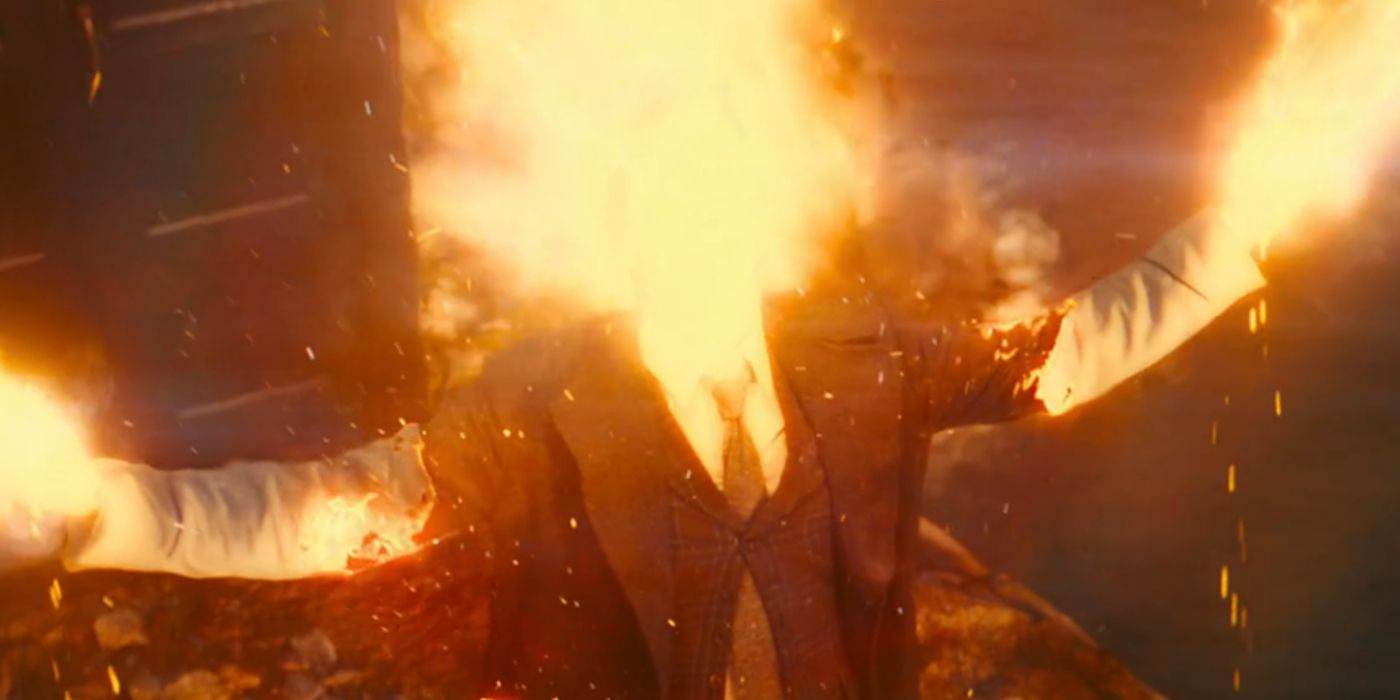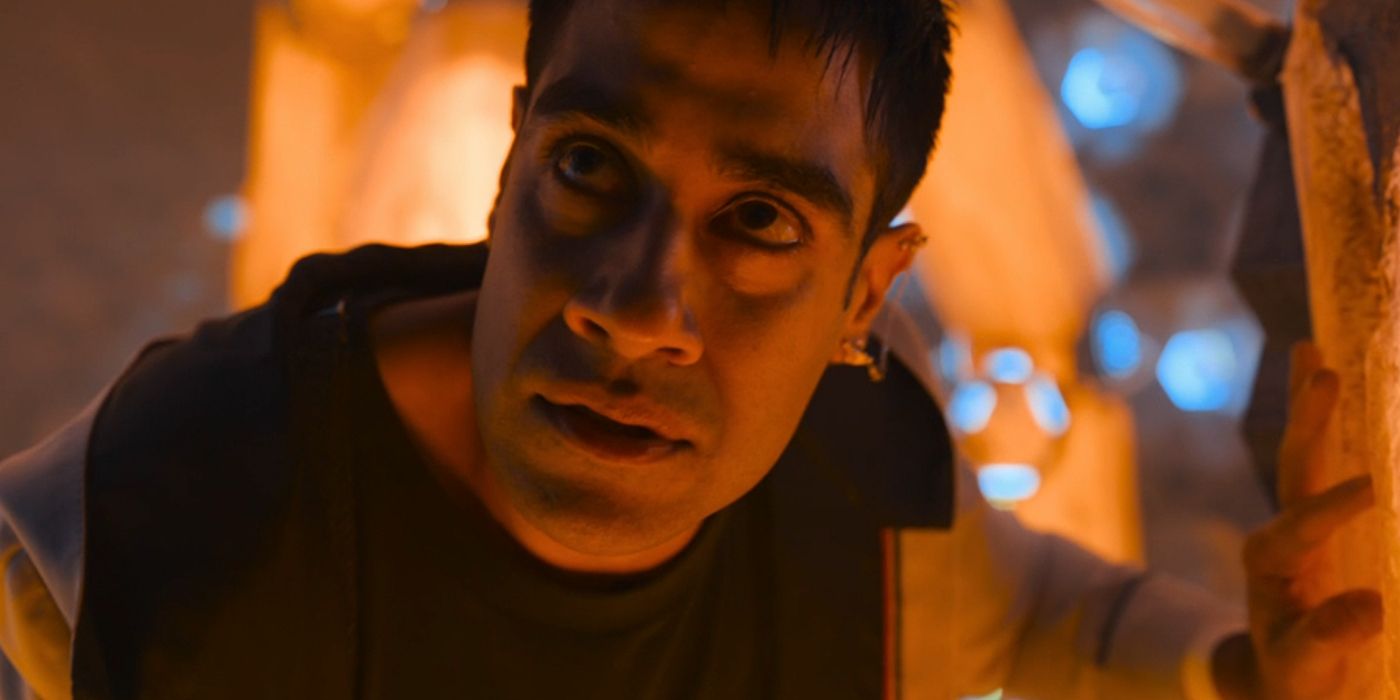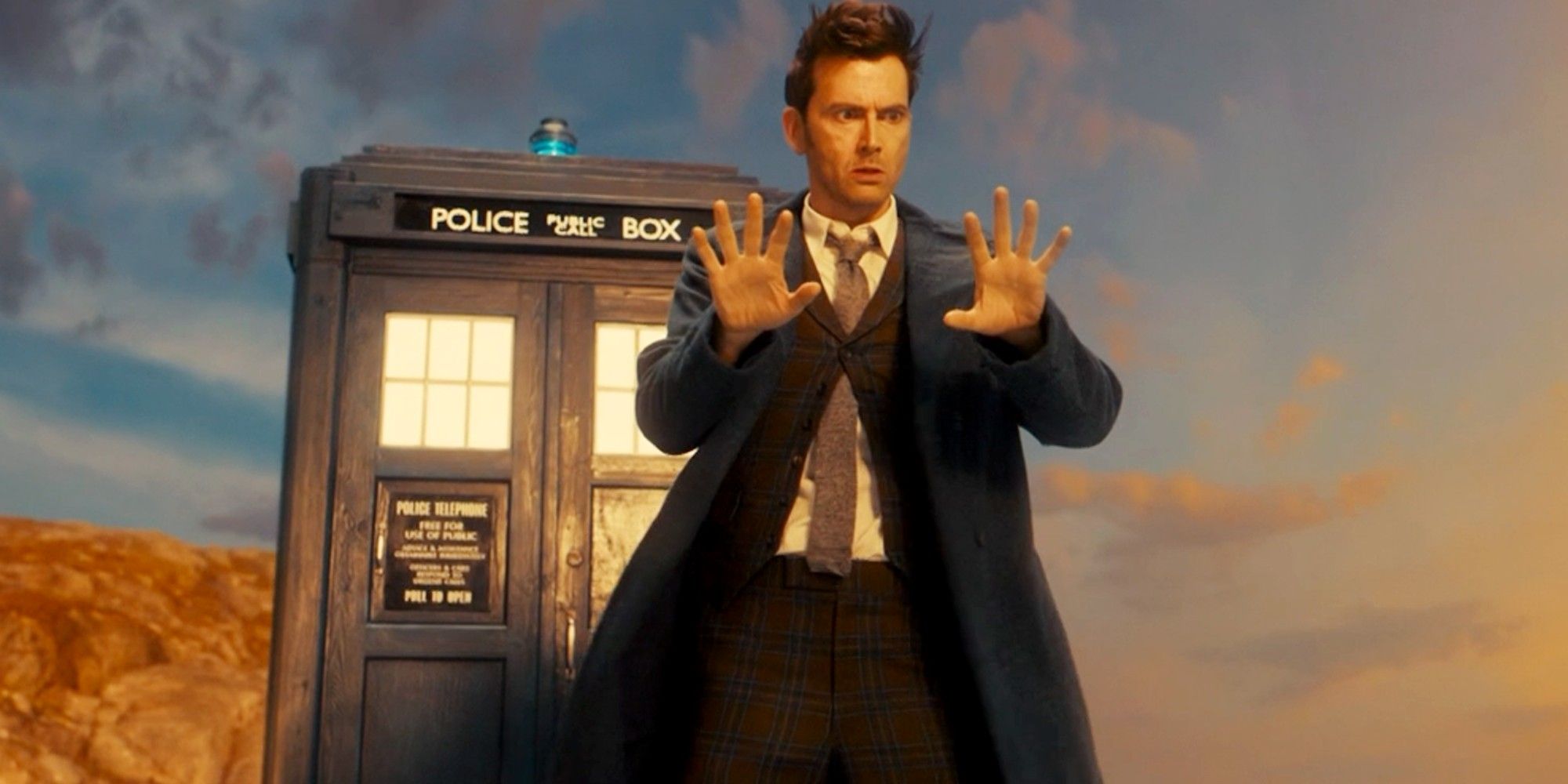This article contains spoilers for the Doctor Who Centenary Special, The Power of the Doctor.The Doctor Who Centenary Special, The Power of the Doctor, saw Jodie Whittaker's regeneration go badly wrong - and, strangely, her clothes changed along with her body. Jodie Whittaker's time as the Thirteenth Doctor has come to an end, and The Power of the Doctor concluded with an emotional regeneration scene. Whittaker regenerated into David Tennant, a transformation that left the Doctor shaken as he realized he'd taken on a familiar form. But one specific detail will have taken viewers by surprise as well; the fact the Doctor's clothes changed too.
A Time Lord's clothes do not normally change during regeneration, meaning viewers should have been treated to an amusing scene of David Tennant wearing Jodie Whittaker's outfit. The Power of the Doctor broke with this tradition, however, with the Doctor's clothes transformed by the same kind of temporal energy normally associated with regeneration. It's a strong implication that there's something very wrong with this regeneration; that it breaks the rules, and perhaps has been triggered by an external force.
The Power Of The Doctor Reminds Viewers Clothes Don't Regenerate
The Power of the Doctor actually reminded audiences how the rules of regeneration normally work, with the Master using a forced regeneration to take control of the Doctor's body (and thereby gain the potentially infinite lives of the Timeless Child). This led Sacha Dhawan's Master to appear in Whittaker's clothing, and he kept it for a while before designing his own faux-Doctor outfit incorporating elements of past Doctor Who costumes. These scenes serve to highlight the fact Whittaker's regeneration into David Tennant breaks all the rules, because the clothing simply shouldn't have changed.
What External Force Could Have Affected Whittaker's Regeneration Into Tennant
This, naturally, raises the question about just what kind of external force could affect the Doctor's regeneration in such a way. It requires a villain who can potentially rewrite reality itself, and the most likely culprit is Neil Patrick Harris' Celestial Toymaker - confirmed as the villain of Doctor Who's 60th anniversary celebrations next year. A classic Doctor Who foe introduced in 1966, the Celestial Toymaker is a being who delights in playing games with the lives of others for his own sadistic amusement. The Doctor is an old enemy of the Celestial Toymaker - they'd crossed paths at least twice, including once in an unseen adventure - and he'd have the necessary power to meddle with the Doctor's regeneration.
David Tennant's return is the first time regeneration has truly felt mysterious since William Hartnell's departure in the 1966 story The Tenth Planet, which introduced the concept. Patrick Troughton's Second Doctor was initially an enigma, with his own companions unsure whether he could be trusted; his debut story, The Power of the Daleks, deliberately played upon this and encouraged viewers to question his honesty and heroism. The Power of the Doctor sets up something even more curious, with the established rules of regeneration in flux and the Doctor himself reeling. Unfortunately, in this case there will be something of a wait for answers; Doctor Who won't return until 2023, when the truth about Tennant's return - and his regenerating clothes - will surely be revealed.



